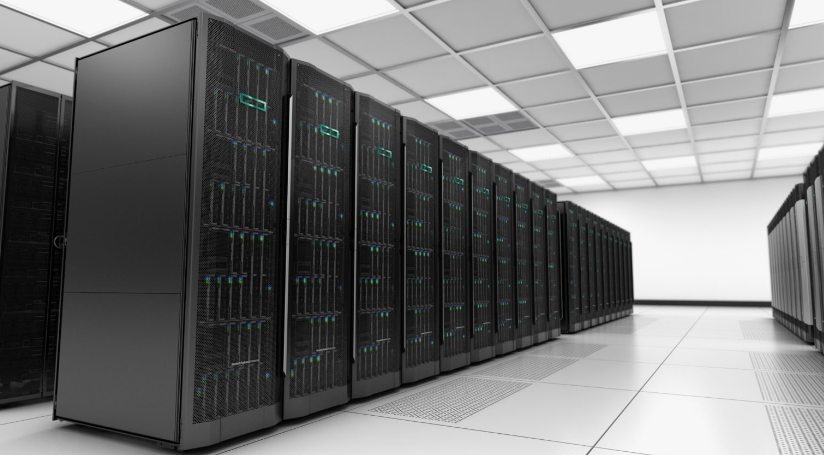Server blade technology is making waves in the data management and computing sphere. It’s an inventive way to deploy servers that brings top-notch efficiency and performance. This innovation is transforming the landscape for businesses and organisations, regardless of their size.
At the heart of server blade technology lies a simplified and compact solution that replaces the conventional, bulky servers with a more agile and modular design. Picture a server farm compressed into a single chassis, where each blade stands for a distinct server module. This consolidation not only preserves physical space but also curtails power usage and cooling demands, offering an environmentally conscious option.
Let’s look at the incredible performance of server blade technology by scrolling below in this blog.
Saves Physical Space in Data Centres
This innovative technology simplifies the system by merging many servers into one small unit. Server blade technology compresses multiple server units into a single frame, much like stacking books on a shelf. This consolidation enables data centres to house additional computing capacity in the same space.
Furthermore, these blades are notably slender, resembling thin sheets. Their sleek design reduces the necessity for extensive server racks and shelves. Consequently, operators of data centres can allocate extra room for other essential components or even plan for future growth.
Built-In Redundancy Enhances System Reliability
- In business infrastructure, blade servers utilise redundancy to enhance reliability. Simply put, they have duplicate parts. If one fails, the backup takes over, preventing any service interruptions.
- For example, these servers have extra power supplies and cooling systems. If a power or cooling unit breaks, the backup ensures the system keeps running.
- Blade servers also have backup network interfaces and storage controllers. If a network or storage unit stops working, data moves to a functioning part, keeping the system stable.
- Internally, these servers boast several CPU and memory modules. If one malfunctions, the server switches to a working one, so applications run smoothly.
- Besides hardware, blade servers use software for redundancy. They leverage clustering and load balancing to evenly distribute tasks. If a server faces issues, its duties transfer to another, maintaining consistent service.
Consumes Less Energy
Server blades are experts at energy efficiency by pooling vital resources, like power and cooling systems.
These servers share a single chassis, which contains multiple blades. This chassis has shared resources: power and cooling fans for all blades.
Think of the blade server chassis as a streamlined business toolbox. Each blade represents a unique tool you can add or take out with ease. Instead of each tool needing its own power, there’s a unified power source in the chassis. New blades just connect to this communal power, cutting down on individual power systems.
Likewise, the chassis cooling fans are placed to cool every blade effectively. So, rather than each server needing its own fan, a consolidated cooling method keeps everything at an optimal temperature.
Lower Hardware and Maintenance Costs
Server blades offer myriad advantages that cut costs. They excel in energy utilisation, typically demanding fewer resources than standalone servers, ultimately resulting in reduced power expenses. A singular management module oversees multiple blade servers, streamlining operations and diminishing administrative expenditures.
Their compact design generates less heat, which translates into decreased cooling requirements, yielding additional energy savings. Blade servers amalgamate storage, processing, and networking functions, leading to diminished hardware expenses thanks to fewer components involved.
Centralised Management Simplifies Operations
Managing server blades centrally makes data centre admin a breeze. It all happens through one slick interface.
- Streamlined Oversight: Instead of juggling separate server chores, admins get to keep tabs on the entire blade server scene using a nifty interface. It eases jobs like software updates, watching out for issues, and fixing them.
- Maximise Resources: Central control lets you shuffle CPU, memory, and storage around as you please. It’s like a resource ballet, ensuring things run slick and nothing goes to waste.
- Less Downtime: The control tools keep an eye on things in real-time and give the heads-up. Admins can tackle problems fast, keeping the downtime to a minimum, and the system humming.
- Standard Setups: Admins can set rules and templates for all blade servers, keeping things neat and tidy. It means fewer mistakes and better security with firm rules in place.
Blades Can Be Added or Removed
Server blades offer remarkable scalability advantages. They bring forth a modular approach, with each blade housing its individual CPU, memory, storage, and networking components. This distinct design enables organisations to elevate their infrastructure with ease, by simply incorporating more blades into the current chassis. This means that when the need for increased computing prowess or storage capacity arises, administrators can seamlessly introduce supplementary blades without the necessity for extensive rewiring or reconfiguration.
Furthermore, the scalability of blade servers extends to the networking realm. Typically, blade server chassis integrate network switches or fabric modules, simplifying the augmentation of networking resources when additional blades come into play. This grants administrators the ability to establish connections for new blades on the network without grappling with the complexities associated with external switches or cabling.
Key Takeaways
Server blade tech has indeed sparked a revolution in the realm of data centres and computing infrastructure. Its outstanding performance and efficiency boosts have cleared the path for a more streamlined and cost friendly approach to handling data and applications.




